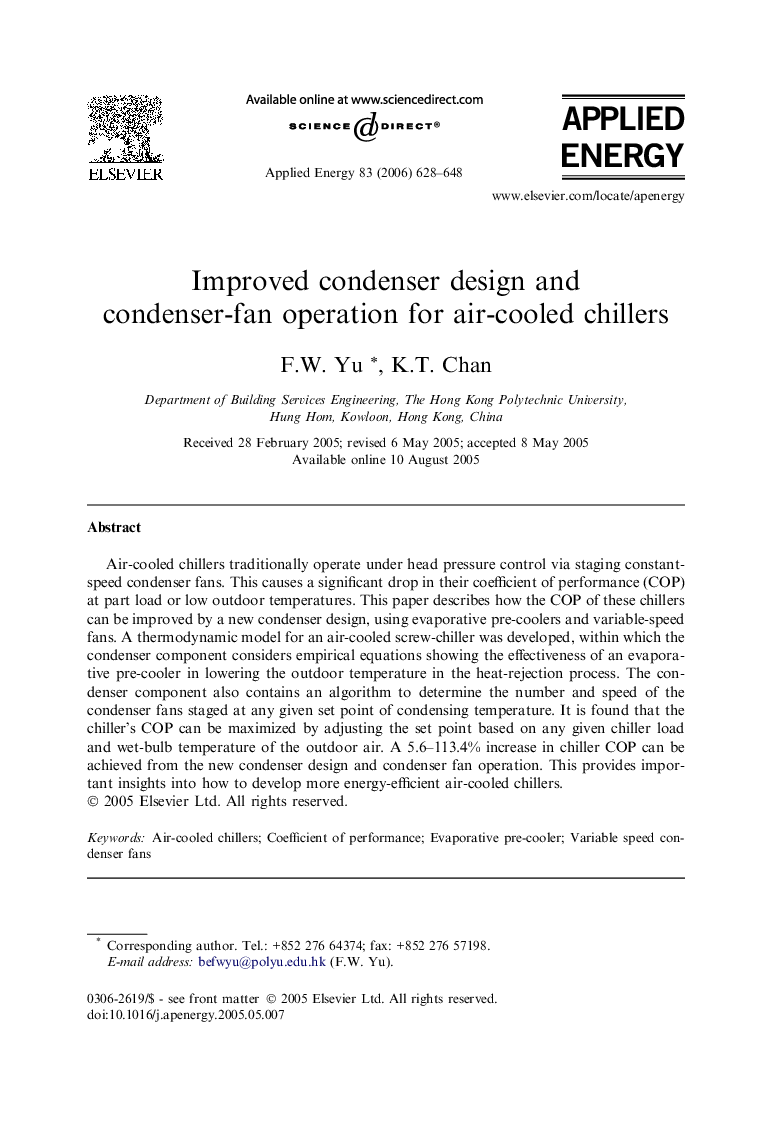| Article ID | Journal | Published Year | Pages | File Type |
|---|---|---|---|---|
| 245474 | Applied Energy | 2006 | 21 Pages |
Air-cooled chillers traditionally operate under head pressure control via staging constant-speed condenser fans. This causes a significant drop in their coefficient of performance (COP) at part load or low outdoor temperatures. This paper describes how the COP of these chillers can be improved by a new condenser design, using evaporative pre-coolers and variable-speed fans. A thermodynamic model for an air-cooled screw-chiller was developed, within which the condenser component considers empirical equations showing the effectiveness of an evaporative pre-cooler in lowering the outdoor temperature in the heat-rejection process. The condenser component also contains an algorithm to determine the number and speed of the condenser fans staged at any given set point of condensing temperature. It is found that the chiller’s COP can be maximized by adjusting the set point based on any given chiller load and wet-bulb temperature of the outdoor air. A 5.6–113.4% increase in chiller COP can be achieved from the new condenser design and condenser fan operation. This provides important insights into how to develop more energy-efficient air-cooled chillers.
